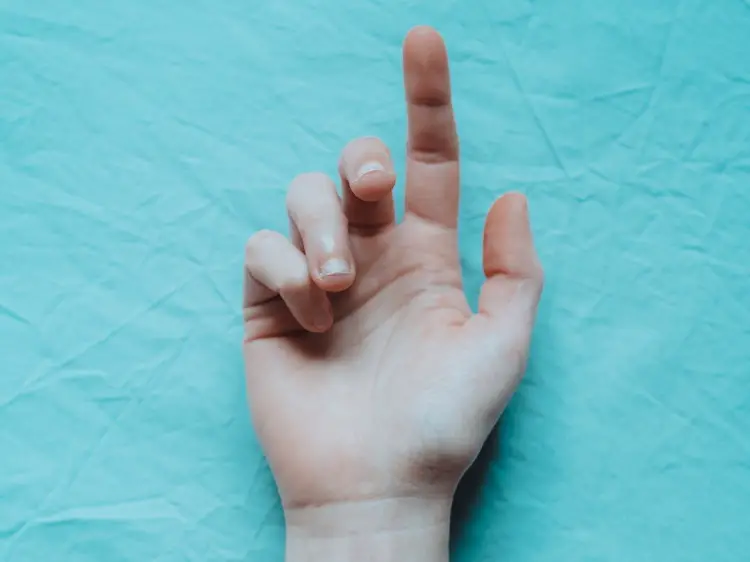Care is probably one of the most important factors to consider if you regularly use nail products. One of the common products nail enthusiasts like using is dip powder. However, like all nail products, there is the good and bad.
So, this guide focuses on you if you have been asking, “why do my nails hurt after dip powder?”
There are various reasons why your nails hurt after dip powder. It could be due to a lack of hygiene, weak nails, excessive use of acetone, and various other reasons. Fortunately, we also look at prevention and medical tips.
So, ready for all the fun-packed knowledge we have outlined for you?
Let us dive right in!
What Exactly are Dip Nails?
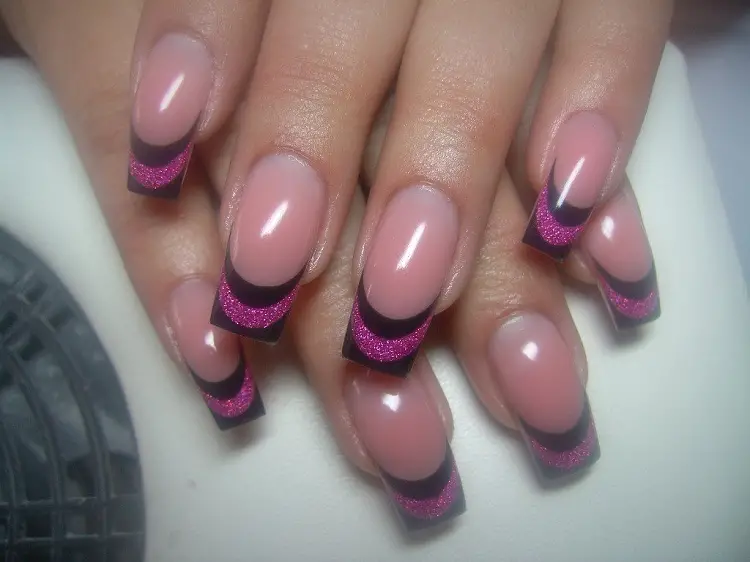
Dip nails refer to an acrylic enhancement that requires a varied application. It involves setting a resin directly to your nails, then dipping your nails into a powder. The process leads to creating a hard-coated acrylic substance, which you call dip nails.
Pros of Dip Nails
- Offers excellent longevity period.
- Doesn’t require any UV for the application process.
- Suitable for nail designers.
- Powder has rich pigments.
Cons of Dip Nails
- Dipping in the same jar raises hygiene issues.
- Not easy to use stencils with dip nails.
Reasons Why Your Dip Nails Hurt After Dip Powder
There are various reasons why your dip nails hurt after using acrylic powder. These include:
Recommended Products
These are the products you will need for caring, treating, and maintaining your dip nails – so they don’t hurt!
| Product | Description | Link |
| Nail care kit | It contains resources like a file, nail cutter, and buffing tool. | Manicure Set Nail Clippers Pedicure Kit |
| Nail kit disinfectant container | Use this to clean your nail care tools. | JJ CARE Disinfectant Jar (21 oz) Pack of 1 |
| Acetone/disinfectant | For the cleaning process | Super Nail Pure Acetone Polish Remover |
| Methylated spirit | A cleaning and disinfectant alternative. | N/A |
| Gloves | For holding your cleaning tools and products. | Med PRIDE NitriPride Nitrile-Vinyl Blend Exam Gloves |
| Cotton pads | For performing the cleaning process. | Amazon Basics Cotton Rounds |
| Nail moisturizer conditioner | For strengthening and improving your nail condition | CND SolarOil Nail & Cuticle Care |
Reason #1. Paronychia
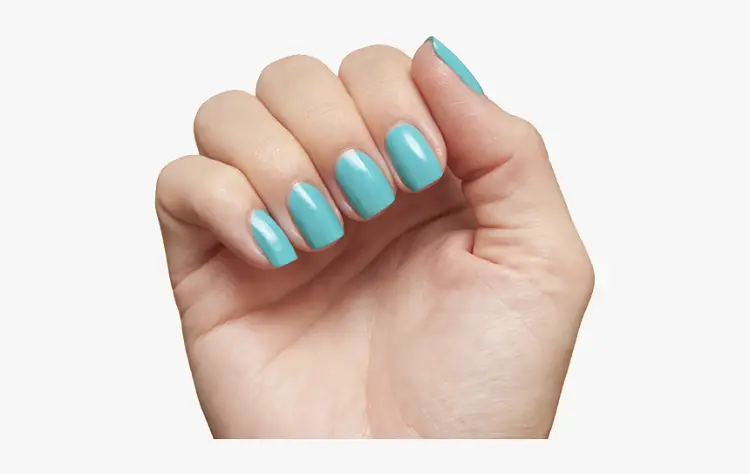
It refers to a skin infection that also affects the nails. Usually, the common cause of this nail health issue is bacteria, specifically from the yeast category.
It goes by the scientific term Candida – a common cause of thin nails after dip powder. The main entry means of this bacteria to the skin or nail area involves various mediums.
These include hangnail, trimming, and even irregular cuticle care methods. Issues such as overexposing your nails to excessive water are also common causes.
One of the main signs of paronychia is red, swollen, or painful blisters around the nail. However, it can sometimes also lead to nail discoloration and pus-filled wounds.
Overall, this infection will make your nails feel warm or hot. While treating it is simple, it can easily lead to nail detachment when left unchecked.
Treatment Methods
- You need to soak your nails in some water for a few minutes each day. Mix the water with some salt to help control the inflammation.
- Get some paint medication to help control the discomfort or wounds arising from the nail issue. Common example is Tylenol or Panadol.
- Some infections at the advanced stage might require medical checkups and oral antibiotics.
Reason #2. Fungi
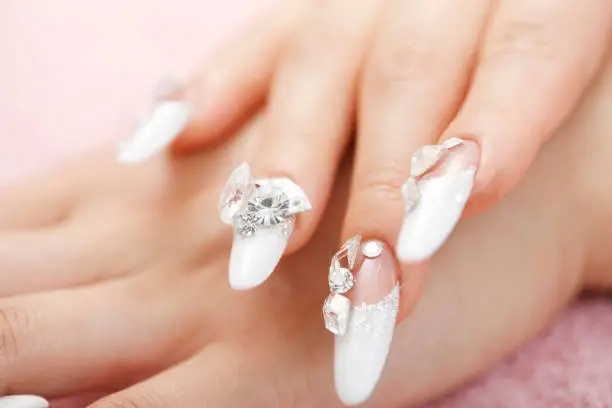
While they are most common among toenails, fungal infections also affect the fingers. A common example is Onychomycosis, which often leads to nail discoloration.
The main cause of fungal infections on the nail usually varies with respect to various factors. It can occur because of the excessive use of nail products, which makes you prone to products like bacteria.
Or, it can also be due to a lack of hygiene issues, such as the environment you work or live in. So, be careful in determining the specific cause of hygiene issues that might cause nail fungi infections.
While products like disinfectant and acetone can help to remove the fungi, prevention is always better than a cure. So, try and find ways of preventing this issue ahead of time.
It can also cause the nails to become overly thick and prone to issues like breakages. Fungal nail infections occur because of molds, fungi, and dirt underneath the dip nails.
They will eventually spread to other nail sections and even the surrounding skin area. So, why do your dip nails hurt?
Well, we recommend you check up for the aforementioned symptoms to determine if it’s fungi. However, nothing is set in stone when it comes to nails. You can still have infected nails without having them hurt at all.
Treatment Methods
Fungi infections require a thorough hygiene and nail care approach (they tend to be aggressive!). Here are the tips we recommend:
- Invest in an antifungal cream for cleaning your nails.
- Get a nail care kit, which you shall use for buffing and getting to the deep sections of your nail bed.
- Use nail acetone to clean all the tools your use and your nails. Its the best product for handling the side effects of dip powder nails – those with hygiene issues!
- Get fungi medications if your feel the yeast problem has become too difficult to handle.
Reason #3. Hangnail
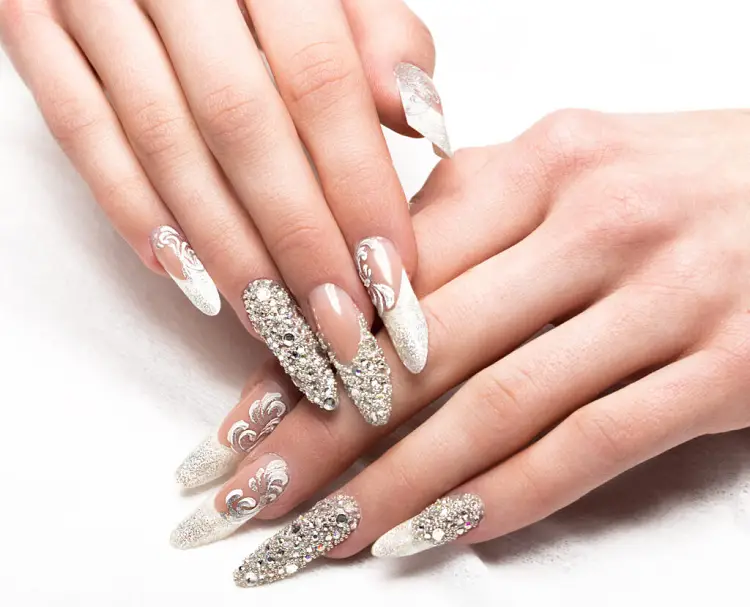
It refers to a small and ripped skin piece that exists around the cuticles. The common cause of this issue is using alcohol-based products like hand sanitizers. It can also occur because of issues like washing your hands constantly or regularly picking at your nails.
Even though a hangnail isn’t a portion of your nails, it often causes significant amounts of discomfort.
Our research also showed that issues like hangnails are common among people with brittle nails. Such nails are prone to any form of damage, including those that occur from minor trauma amounts.
Most people experience it as a raw, and tender, or irritating feeling around the nail area. Left unchecked, it can even cause the accumulation of pus, and significant nail bed damage.
Treatment Methods
- The first step is cleaning your nails using disinfectant and salt water.
- Then clean some clippers, and use it to remove the pieces of skin and make sure you don’t cut your cuticles.
- We recommend you avoid pressing overly deep on your nails. That is because this can lead to nail trauma or discomfort.
- Clean the affected nail area using some soap and acetone once this process completes.
- If there is no bleeding, wrap your nails using a breathable sheath. Disinfect first for the best results.
- Ensure you apply some cream to the affected area once the recovery begins.
Reason #5. Trauma
Nail bed injuries are common because of the nature in which they occur. Plus, they often lead to pain, even if minimal.
Left unchecked, the pain can lead to festering wounds and even permanent nail damage. Trauma is the leading cause of throbbing nails after dip and gel.
It can cause your nails to bleed or even lead to the accumulation of pus in the body. The paint might also increase over time as the infection rate increases throughout the nail.
The damage can sometimes be significant to the point of causing your nails to rip off. If this happens, it will expose nerve endings, which can easily cause discomfort.
Treatment Methods
- Allow your nail bed to heal naturally. If the injury is minor, then your nail should just heal on its own after a while.
- Nails containing blood or high pus levels might require treatment from a professional health provider.
- Perform first aid and nail disinfection process to the structure of your nail.
Reason # 6. Psoriasis
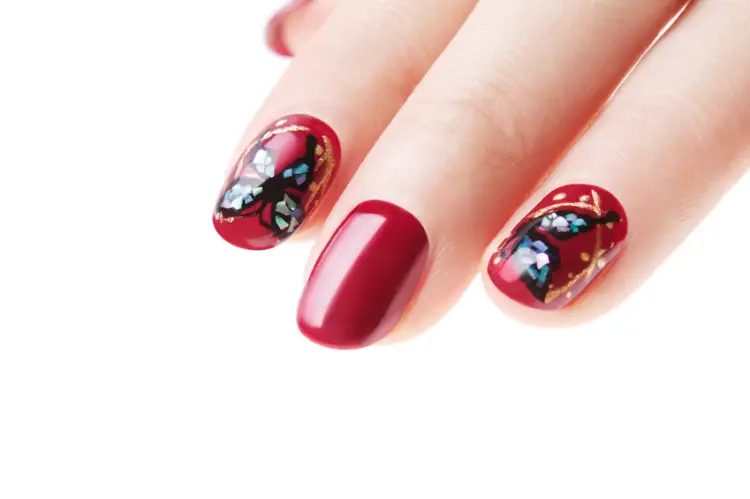
This autoimmune health complication causes dry and thick patches on the nail bed. However, it also commonly affects the nail.
The main issue is that it results in separation issues, which can also lead to discomfort. Our research also shows that Psoriasis is the leading cause of dip powder nail problems.
One of the main ways this disease often starts is when an individual develops significant amounts of psoriasis on the skin.
It also makes the nails have a brittle and crumbly appearance. The nail might even seem to be disintegrating at some point.
Eventually, this can lead to extensive pain and nail damage without the correct treatment.
Treatment Methods
- You can start this process by using topical steroid treatments to help reduce the inflammation issue.
- If this doesn’t work, try using corticosteroids on your nail matrix. It refers to the section of nails where your fingernails will start to develop.
- Some extensive cases of psoriasis sometimes require medications for the best results. Using a systemic medication is best for this process. Some common examples you can try include infliximab or adalimumab.
Is It Normal for Dip Nails to Hurt After Dip Powder?
No, dip nails are not normal to hurt after dip powder. The reason is that dip powder doesn’t contain any harsh chemicals that can lead to long-term nail damage complications.
You must also realize that nails hurting after dip powder could signify weak nails.
It’s the main reason anyone using dip nails (or any other nail product) should be cautious with the application process. Using dip nails isn’t all about convenience and longevity. It also involves looking at your nail care and maintenance regimen from a broad perspective!
PRO TIP! We recommend you watch this Youtube Video “DO’s and DON’TS – Prepping Nails for Dip Powder | Prevent LIFTING + Protect Your Natural Nails. It outlines all you need to know about using dip nails correctly.
How To Use Dip Powder So That it Doesn’t Hurt Your Nails
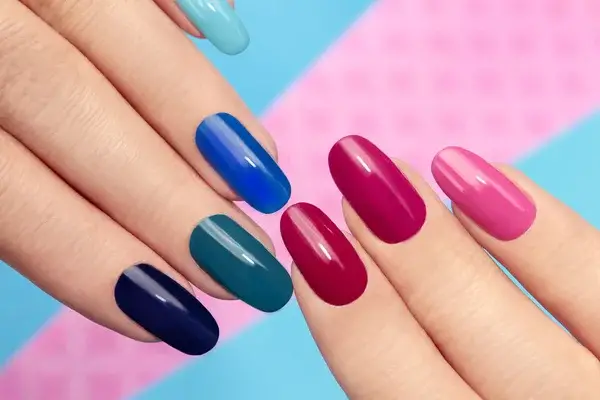
We outlined this guide on using dip nails correctly so that it doesn’t hurt your nails. The products you will need for this process are outlined in the table above.
So, let us dive right into the steps you should expect:
Step #1. Push Back the Cuticles
Do this to produce a rough texture on your nail surface, which should occur through filing. Next, sanitize the surface of your nail as required. Ensure you thoroughly prepare your nails so that your dip nails adhere strongly.
Some of the processes involved in preparing the nails often focus on making it coarser. Why is this?
That is because a coarser nail bed helps the dip powder to adhere strongly. However, the sanding process should not be excessive because this can lead to paper-thin acrylics complication.
The best grit level for sanding your nails should average at the 240 mark. Ensure you also disinfect your sanding tool next time before working on your nails.
Step #2. Base Coat
The next step is to apply a thin base coat on your nail surface. Ensure you perform the stroking process towards the tip section of your nail. Never get the product on your cuticles. The powder will easily pick up wherever the base is applied.
Step #3. Dip Your Nails at An Angle
The next step involves quickly dipping your nails into the product at an angle. We recommend you do this to ensure the powder coating adheres to all sections of your nail bed.
Next, tap your finger to remove the powder between your nails. Ensure you always paint and dip your nails immediately into the product before proceeding to the next one.
Doing this will ensure the base you applied in the previous step won’t dry out. It will also make more powder adhere to your nail easy. You can repeat the steps in this stage if you want improved coverage.
Step #4. Apply Another Base Coat Over the Nail Surface
Once you dip your nails in the dip powder, apply a base coat over your nail surface. We recommend you dip your nails quickly into the base and acrylic powder. Doing this will make it easy to seal all powder layers. Never get the product to your cuticles.
Step #5. Apply an Activator
Your next step involves using an activator product to help harden the liquid and powder you want to use. Let the activator sit for two minutes so that it dries completely.
When your powder blend hardness as required, file your nails accordingly. We recommend using a coarse grit bugger because it will help even out the surface and density of your nails. A 240 Grit Buffer should work well for the nail smoothening process.
Step #6. Apply a Sealer Coat
The next step is to set the sealer coat over your nail surface. It’s a process that best occurs using two thin strokes for the best results.
Let it dry for a few minutes. Using brushes will harden or pick up color as when applying the powder. We recommend you switch between using a softener for convenience.
Finally, set a sealer coat on the structure of your nails. Give your nails a few minutes to dry.
And voila, your dip nails should be ready at this point. Remember that you might experience the nails feeling weird after using dip – it’s normal. However, it should not be painful!
PRO TIP! Here is a Youtube Video detailing dip nail application and treatment processes. Link: 💅🏼How to do Dip Powder for Beginners ✨ Nail Tutorial ⚬ Dip Powder 101 📚✅
How to Strengthen Nails After Dip Powder
There are various techniques you can use to strengthen nails after dip powder. The abovementioned products will also apply to this context:
Tip #1. Use Cuticle Oil or Nail Moisturizer
Cuticle oil and nail moisturizers are excellent products for taking care of your nail. They help to improve the overall strength of your nail, especially if you have been too prone to damage.
It’s also a standard product for anyone suffering from significant nail care complications.
Tip #2. Take a Break – It Helps!
Have you thought about taking well-timed breaks from using nail care products?
Well, it’s a dermatologically proven concept, and it’s why we recommend you take regular breaks from using dip powder products. On average, up to seven days should be perfect for dip powder nails.
Tip #3. Think About Your Diet
A recent study showed a significant correlation between what you eat and the health of your nails.
Many people take this fact for granted, but there is no room for excuses when you have damaged nails. You must consider all solutions across the board, and the correct diet should not be an exemption. Watch what you eat if you have weak nails!
Tip #4. Is a Lifestyle Change Possible?
Are you regularly engaged in activities like contact sports? Or does your career continually expose your nails to some form of pressure?
Regardless of your current lifestyle circumstances, you have to determine whether it’s the main reason for your suffering from hurting nails. Try, and find simple ways to adjust your lifestyle so it also matches the health of your nails.
Frequently Asked Questions (FAQ)
How Long Does It Take for Nails to Heal After Dip Powder?
The amount of time it takes for nails to heal after dip powder depends on various factors. These can include your nail health, the application process, and the results you expected. It can also relate to your nail care preferences and procedures.
Why Do My Nails Burn After Dip Powder?
There are various reasons why your nails burn after dip powder. It could be because of using acetone products, which can cause discomfort. Or it could be because you have a damaged nail underneath.
Does Dipping Powder Damage Your Nails?
No, dipping powder doesn’t cause damage to your nails. However, like all other nail care products, caution and care is the name of the game. Do this, and you are sure to maintain quality nails throughout.
How Do I Treat My Nails After Dip Powder?
There are various ways of treating your nails after dip powder. You can use first aid kids, nail strengtheners, and nail moisturizers. The best method for your nail treatment needs depends on your expected results.
How Often Should You Take a Break From Dip Nails?
You should take a break from using dip nails as regularly as possible. A break of up to one week should be sufficient for this process. Ensure you also moisturize and care for your nails during this period.
Why Do My Fingers Burn When I Get My Nails Done?
There are various reasons why your fingers burn when getting your nails done. It could be because of products like acetone, or your nails might have an infection. Regardless of the cause, ensure you address the issue first before proceeding.
Why Do My Nails Hurt When I Press on Them?
There are various reasons why your nails hurt when you press on them. Some leading causes include nail damage, fungi, trauma, paper-thin nails, and other issues. You have to leave your nails bare and use a nail strengthener to help restore their quality.
Does Removing Dip Nails Hurt?
No, removing dip nails doesn’t hurt. If you encounter paint during the removal process, it could be due to several reasons. These can include trauma, bacteria, fungi, and experiencing brittle nails.
There you have it – that’s all we could say regarding your nails hurting even after applying dip powder. Next time you are using dip powder, be careful. Also, be cautious of any signs of paint or damage ahead of time!
- Crochet Braid Hair Cost: Hope for a Style to Slay!! - January 9, 2024
- Best Braid Pattern For Crochet: Hair-Styling Tips And Tricks - January 3, 2024
- How To Braid Hair For Crochet: Best Hair-Styling Tips! - December 26, 2023

